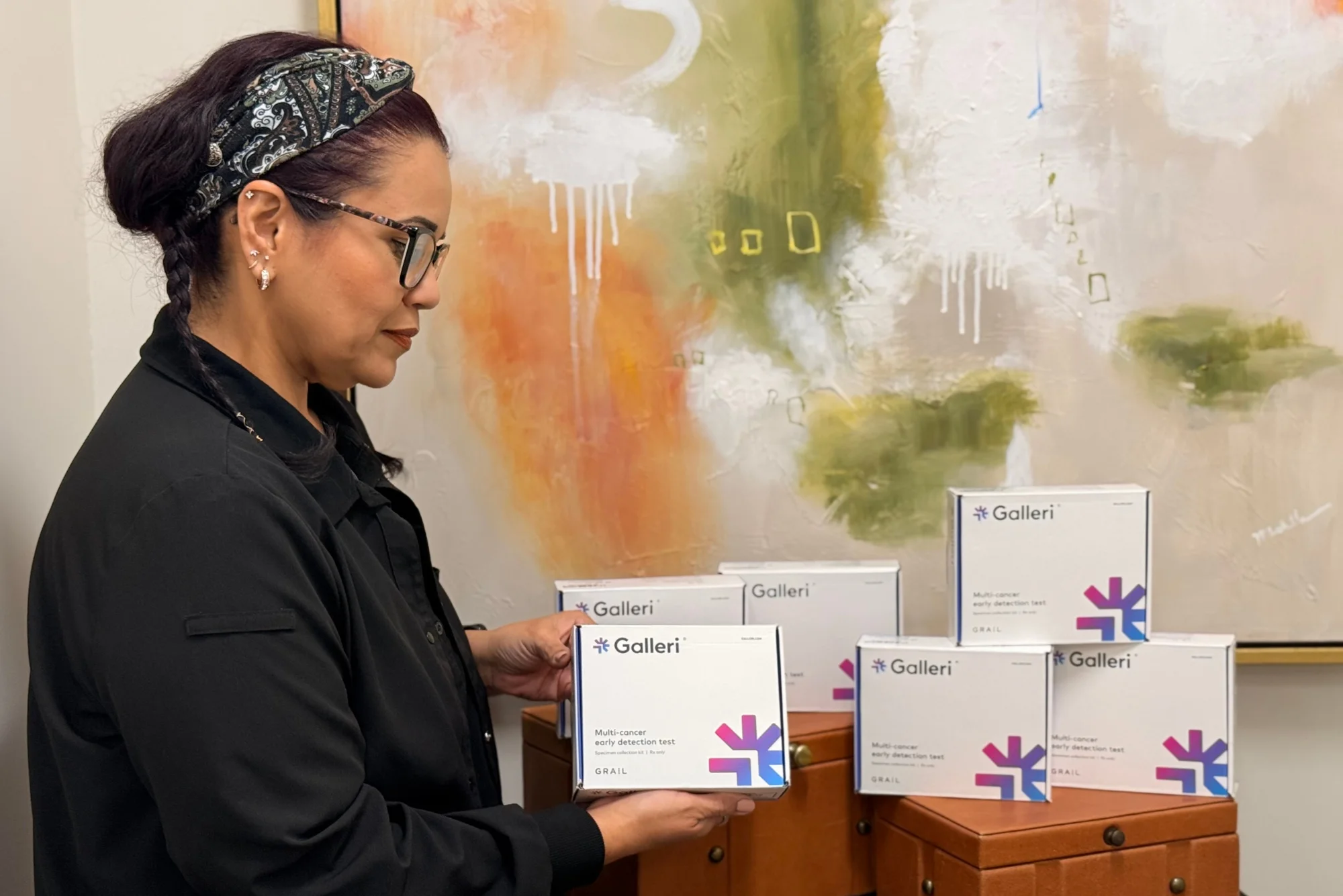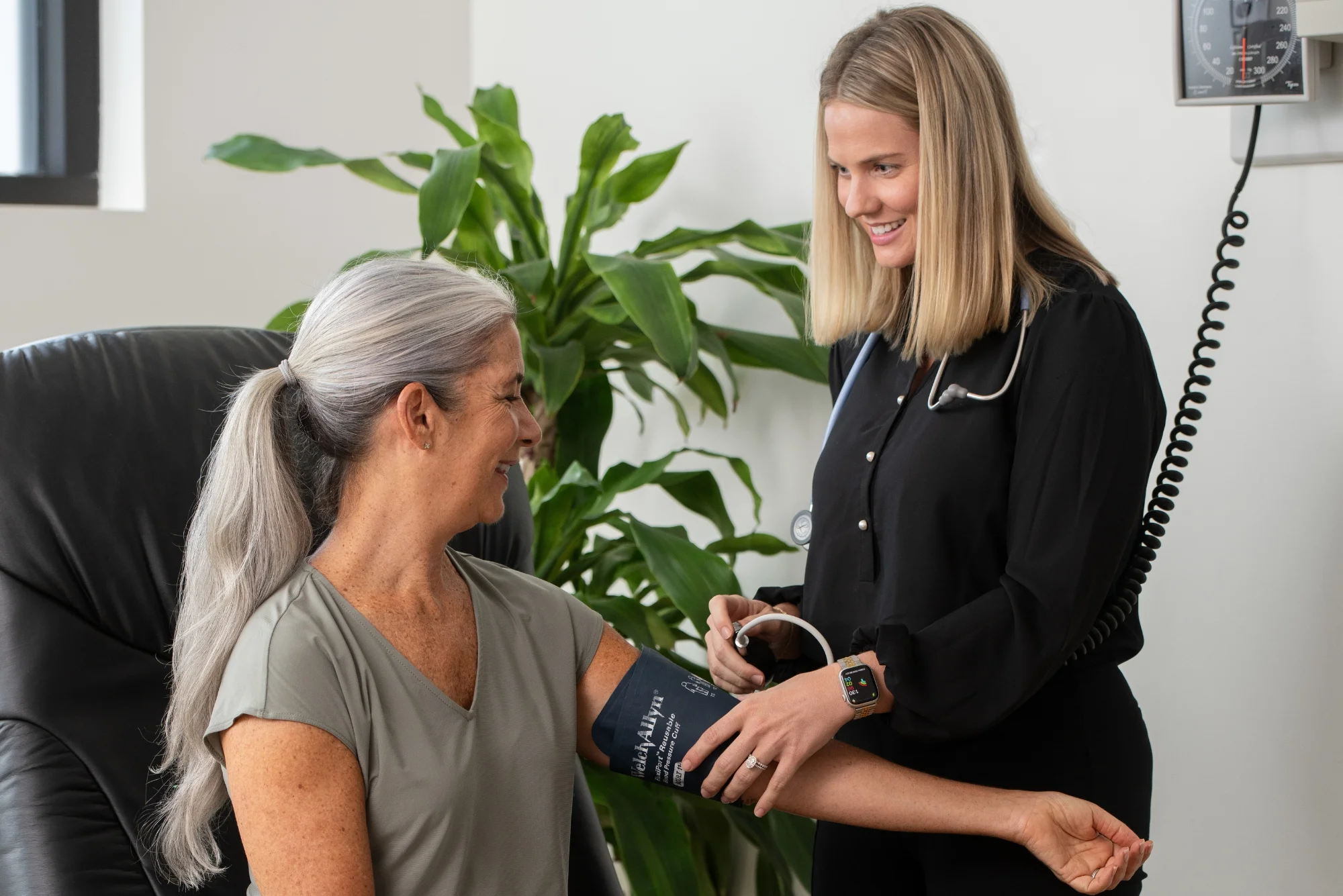
Technological Innovation in the Medicine 3.0 Movement
In Part I of our Summer Blog Series, we looked at a shift in mindset to the Medicine 3.0 movement, which emphasizes prevention over treatment and focuses on improving quality of life. We described how our Tampa Bay concierge practice, Griffin Concierge Medical, uses comprehensive lab panels and other screening tools to help our members identify risks and early signs of disease, how our concierge physicians empower our members by taking the time to discuss results and concerns in detail, and how we collaborate with our members to help mitigate risks by setting individualized lifestyle and healthcare plans.
This month, we will examine Medicine 3.0’s technology and innovation component and its role in healthcare.

Radley Griffin, M.D.¹, founder and CEO of Griffin Concierge Medical in Tampa Bay, discusses the ever-changing technology in medicine and what innovative diagnostics we’re using at GCM to help our members identify risk, prevent disease, and optimize health.
Q: There’s so much technology out there today. Watches, apps, rings. What should we make of it all?
Dr. Griffin: Wearable technology can be overwhelming because we see new tech advertised almost daily. When considering bringing a particular tech into our practice, it comes down to whether we find it useful for our patients to help prevent disease and identify health issues that can disrupt our patients’ lives. As physicians, we are interested in this technology and its constant improvements, and we’re working vigorously to identify the technology that gives us early data. It’s all about providing insights.
Q: What are the advantages of using some of this technology?
Dr. Griffin: The idea behind these wearables is to nudge behavior in a particular direction. Can we make small changes now that have a cumulative effect in the future?
We’re trying to identify risks and find areas where we can optimize health. Let’s see if there’s a challenge we can overcome, and if not, we look for areas we can optimize. From a prevention perspective, this technology can be beneficial by providing insight where there wasn’t one previously.
The relationships our physicians at GCM have with our members are very collaborative. We get to know them and learn about their healthcare goals. We ask them, what’s on your mind? This can bring up a more extensive discussion about areas we can look into that we may not have thought about otherwise. And I love that.
Q: What’s an example of technology providing insights to help change behavior?
Dr. Griffin: Let’s look at continuous glucose monitors. In the traditional model, we would take a finger stick to get a blood sample at 8 a.m. on a Monday, for example, to see where the blood sugar was. We guided our therapies based on one or two data points.
As technology evolved, we realized we don’t diagnose diabetes with a finger stick. We use a blood test called hemoglobin A1C, which determines the average blood sugar over three months.
Now we’re taking it a step further, where we can see where the glucose is on a minute-by-minute basis with these continuous glucose monitors, now available over the counter. This can offer our members insight into their everyday patterns—how their bodies process their diets. How do different foods and even exercise—walking, weight training, and HIIT training—impact their blood sugar levels? And with this data, we can help them develop a different strategy to offset a particular pattern.
Another example is heart rhythms. A decade ago, we used EKGs to determine irregular heart rhythms, but this was a snapshot in time for that particular visit. We didn’t know what happened when someone was exercising or sleeping. That’s where these wearables come in beautifully, again, by providing an insight that wasn’t there before. They can identify an episode of atrial fibrillation, which can result in a fatal stroke, and I believe we’re going to start hearing more about how these wearables are helping save lives.
On a personal level, I wear an Oura ring because I am curious about my sleep, so I felt a wearable at night could provide a little further insight into how I can continue to optimize my sleep, whether it be exercising during the day vs. the evening or avoiding alcohol and sugary foods before bedtime. And what’s interesting is that one day, the ring reported: “You must have had a heavy meal last night because your heart rate changed from where it normally is.” And it was right! I had had a heavy meal the previous night. The device also mentioned that I didn’t get as much REM sleep as usual. These little nuggets of data are in the back of my brain and will nudge my behavior going forward.
I see wearables as tools that can empower individuals and provide insights. From a population perspective, time will tell whether these wearables will impact longevity.
Q: Technology, of course, is more than just watches, rings, and apps. What about AI?
Dr. Griffin: AI is about enhancing existing technologies and presenting data in an easily digestible and impactful way. Take plaque analysis. I can read to you from a piece of paper that you have a 50% blockage in your artery, but it’s more impactful to show you a picture of that blockage and the makeup of that plaque, courtesy of AI. Visualizing that disease feels a lot different for me and our patients.
At GCM, we use an AI tool called Cleerly2 to interpret data more deeply and help us determine your likelihood of coronary artery ischemia. Paired with a CCTA scan, Cleerly analyzes the amount of plaque, what kind of plaque, and where the plaque is located.
We also use AI-enabled imaging in a Caristo report to quantify coronary inflammation and help predict your risk of heart attack years in advance.

AI is also changing treatment plans and therapies. GCM has partnered with New Amsterdam Genomics3 to survey your genome (your entire genetic code) and use AI to marry that genome with existing literature to help us recommend what you can do to improve your health and lower your risk of certain diseases and conditions. Without AI, we wouldn’t be able to extract that data in a usable and pertinent way to you as an individual.
We also work with companies using AI to detect skin cancer, and we offer AI-assisted cognitive screening to help predict if a person has declining cognition. We’re adding an AI tool to help detect declining ejection fraction (squeeze of the heart) before seeing it on an EKG or echocardiogram.
This technology is evolving rapidly, and it’s vital for us here at GCM to vet it and determine how we would use it in daily clinical life. We’re cautious about what tech we bring to our practice and what we recommend. We work with our peers to discuss and add tools that benefit our patients.
Q: Is any exciting technology coming soon?
Dr. Griffin: I’m excited about wireless wearable blood pressure wrist cuffs from Withings, a European company bringing these to market. Blood pressure is an important variable to track. You can’t look at a person and tell if they have high blood pressure—it’s truly a silent killer. For a lot of people, it’s genetically driven, so they have no idea they have high blood pressure. That may be one piece of technology that I say everybody should have because blood pressure is one of those things that can change pretty rapidly.
Q: How do you determine which technologies you bring into your practice?
Dr. Griffin: For us at GCM, the innovation should support prevention and optimization. We’ll likely not use it if it doesn’t have any clinical benefit for us. When vetting any piece of technology, we base it on science. We look at what studies support its use in our practice4. We perform a robust trial within our practice to see how it benefits our patients. We discuss this as a team internally and with our colleagues, national and worldwide. To defend a particular piece of technology in our practice, we must explain to our patients why we’re using it. And I think that’s one of the reasons our members partner with us. We’re trying to help them live a healthier life, and innovation is a big part of that.
Conclusion
In Tampa Bay, Medicine 3.0 is more than just a concept – it’s a reality. At Griffin Concierge Medical, we embrace technology and innovation to empower our patients, prevent disease, and optimize health. Join us next month for Part III as we explore the role of prevention in Medicine 3.0 and provide you with actionable strategies to achieve your health goals.
In the meantime, don’t hesitate to contact your Patient Care Coordinator to schedule an appointment with your physician or to ask about the innovative technology we’re using at Griffin Concierge Medical.
Works Cited
- Griffin, Radley. Personal Interview. 17 June 2024.
- Cleerly. “About Cleerly.” Cleerly, 2024, https://cleerlyhealth.com/.
- New Amsterdam Genomics. “Our Technology.” New Amsterdam Genomics, 2024, https://www.nagenomics.com/.
- “Wearable Blood Pressure Monitors May Improve Hypertension Management.” American College of Cardiology,2023, https://www.acc.org/Latest-in-Cardiology/ten-points-to-remember/2023/07/10/18/18/consumer-wearable-health.




